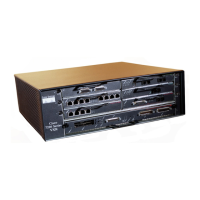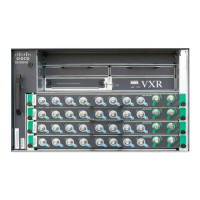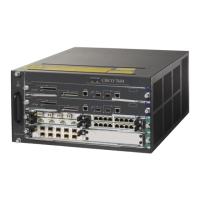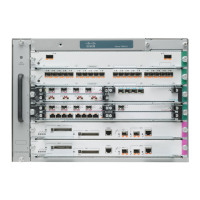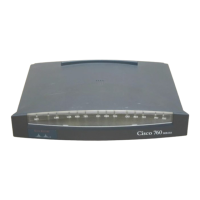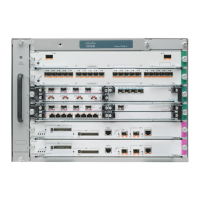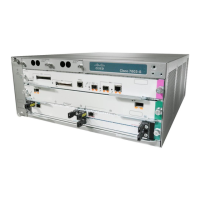Send document comments to nexus7k-docfeedback@cisco.com
4-5
Cisco Nexus 7000 Series NX-OS Interfaces Configuration Guide, Release 5.x
OL-23435-03
Chapter 4 Configuring Layer 3 Interfaces
Licensing Requirements for Layer 3 Interfaces
Virtualization Support
Layer 3 interfaces support Virtual Routing and Forwarding instances (VRFs). VRFs exist within virtual
device contexts (VDCs). By default, Cisco NX-OS places you in the default VDC and default VRF
unless you specifically configure another VDC and VRF. A Layer 3 logical interface (VLAN interface,
loopback) configured in one VDC is isolated from a Layer 3 logical interface with the same number
configured in another VDC. For example, loopback 0 in VDC 1 is independent of loopback 0 in VDC 2.
You can configure up to 1024 loopback interfaces per VDC.
You can associate the interface with a VRF. For VLAN interfaces, you must configure the VLAN
interface in the same VDC as the VLAN.
See the Cisco Nexus 7000 Series NX-OS Virtual Device Context Configuration Guide, Release 5.x, for
information about VDCs and see the Cisco Nexus 7000 Series NX-OS Unicast Routing Configuration
Guide, Release 5.x, for information about configuring an interface in a VRF.
Note You must assign an interface to a VRF before you configure the IP address for that interface.
Licensing Requirements for Layer 3 Interfaces
The following table shows the licensing requirements for this feature:
Prerequisites for Layer 3 Interfaces
Layer 3 interfaces have the following prerequisites:
• You have installed the Advanced Services license and entered the desired VDC (see the Cisco Nexus
7000 Series NX-OS Virtual Device Context Configuration Guide, Release 5.x, if you are configuring
VDCs.
• You are familiar with IP addressing and basic configuration. See the Cisco Nexus 7000 Series NX-OS
Unicast Routing Configuration Guide, Release 5.x, for more information on IP addressing.
Guidelines and Limitations
Layer 3 interfaces have the following configuration guidelines and limitations:
• If you change a Layer 3 interface to a Layer 2 interface, Cisco NX-OS shuts down the interface,
reenables the interface, and removes all configuration specific to Layer 3.
• If you change a Layer 2 interface to a Layer 3 interface, Cisco NX-OS shuts down the interface,
reenables the interface, and deletes all configuration specific to Layer 2.
Product License Requirement
Cisco NX-OS Layer 3 interfaces require no license. Any feature not included in a license package is bundled with the
Cisco NX-OS system images and is provided at no extra charge to you. For a complete explanation of the
Cisco NX-OS licensing scheme, see the Cisco NX-OS Licensing Guide.
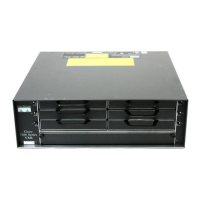
